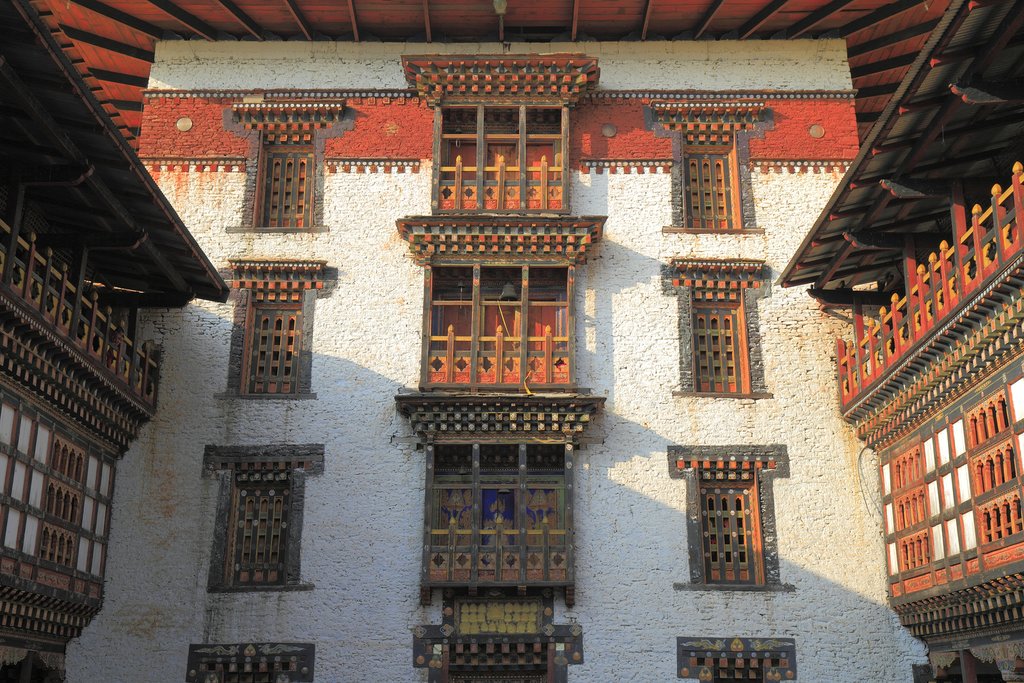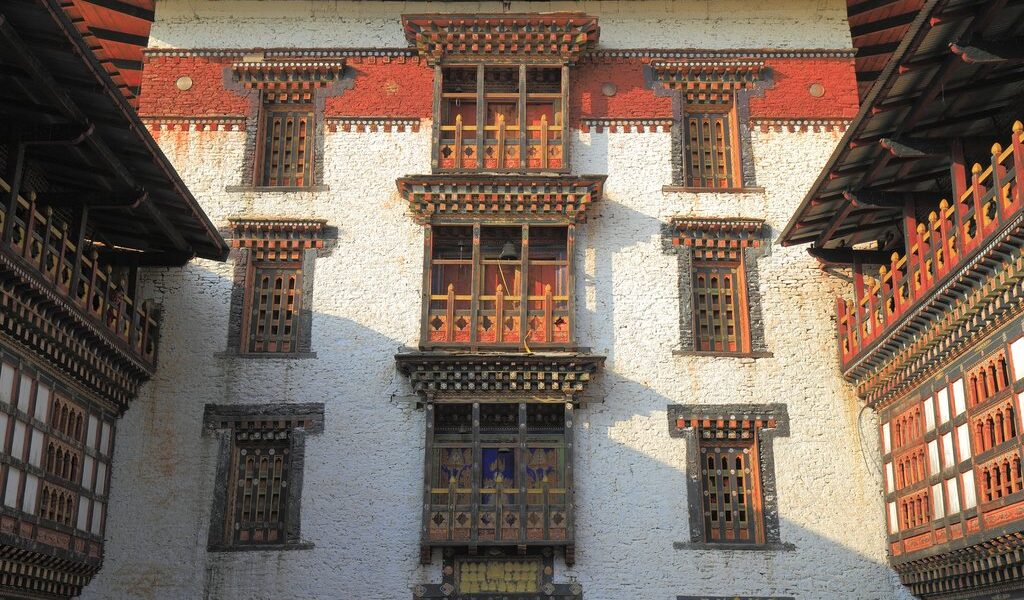
February is the last month of winter in Bhutan. At higher altitudes, temperatures remain cold, but in the jungle national parks in the south, it can get quite warm. February is still the off-season in Bhutan, so you may pay lower prices on some lovely accommodation. Here are some important things to know about traveling to Bhutan in February.
Weather in Bhutan During February
February marks the tail end of winter in the enchanting Kingdom of Bhutan. As such, visitors can anticipate varying temperature ranges depending on the altitude of their chosen destinations. Higher elevations, encompassing areas such as Thimphu, Paro, and the serene valley of Bumthang, will experience colder conditions, a characteristic of the Bhutanese winter. However, venturing into the lower-lying regions and the eastern parts of the country offers a more temperate and agreeable climate.
Consider, for instance, the town of Gelephu, nestled in the south. Here, February temperatures typically fluctuate between a comfortable 54 to 77° F (12 to 25° C). This can even feel quite warm, offering a pleasant contrast to the chillier highlands. It’s worth noting this milder climate is a significant departure from the conditions found in other parts of the kingdom.
However, the majority of places that pique the interest of travelers tend to be situated at higher altitudes. Punakha, for example, rests at approximately 5000 feet (1500 meters) above sea level. During February, temperatures in Punakha range from 46 to 66° F (8 to 19° C). Therefore, it is still advisable to pack layers to ensure comfort in the potentially cooler conditions. The capital city, Thimphu, is located even higher, at around 6500 feet (2000 meters). Here, February temperatures hover between 34 and 57° F (1 and 14° C). Therefore, warm clothing is certainly recommended.
Despite the cooler temperatures, February presents a noteworthy advantage: the skies are generally remarkably clear. This provides exceptional opportunities for breathtaking views of the majestic Himalayan mountains. This clear visibility is a definite draw for photographers and nature enthusiasts alike.
Crowds and Costs in February
The winter season in Bhutan sees a dip in tourist numbers, making February a less crowded time to visit. Consequently, you can take advantage of low-season prices for guided tours and accommodations. This extends across a range of options, from cozy guesthouses to some of Bhutan’s most beautiful boutique and luxury accommodations. You might even stumble upon particularly attractive deals.
Where to Go in Bhutan in February
For those with a penchant for jungle national parks and immersive wildlife experiences, February is an excellent time to explore the Royal Manas National Park. This park sits at a relatively low altitude, ranging from just 200 to 360 feet above sea level. That makes it significantly warmer than many other popular destinations in Bhutan. Within Royal Manas National Park, you have the opportunity to encounter a diverse array of wildlife. This includes the elusive tiger, the imposing rhinoceros, the majestic elephant, and the stealthy leopard.
What to Do in Bhutan in February
While high-altitude trekking is generally not advisable during mid-winter due to safety and comfort considerations, shorter hikes and walks remain a viable and enjoyable option. The clear skies and panoramic mountain vistas make winter a particularly rewarding time to immerse yourself in Bhutan’s natural beauty. Be mindful to avoid very high-altitude routes or overnight camping.
Consider the Punakha Winter Trek as an alternative. This trek meanders through charming villages, verdant forests, and picturesque farmland, without reaching excessively high elevations. This offers a delightful and accessible trekking experience during the winter months.
General sightseeing is also highly recommended in February. During the day, you can explore Bhutan’s renowned temples, palaces, and monasteries, such as the iconic Tiger’s Nest Monastery and the magnificent Punakha Dzong. As evening approaches, you can retreat to the warmth and comfort of your chosen accommodation.
Regardless of the type of accommodation you choose, be sure not to miss the chance to indulge in a traditional hot stone bath. This therapeutic and relaxing experience is typically available for a modest fee.
Events in Bhutan in February
* **Losar:** This significant event occurs in mid-to-late February, although it occasionally falls in early March. Losar marks the lunar new year and is celebrated by Buddhists throughout the Himalaya region, encompassing neighboring Nepal and Tibet. Festivities generally involve families gathering together for feasts and ritualistic thanksgiving ceremonies.
* **Nomad’s Festival, Bumthang:** Held in late February, this festival takes place in Bumthang, the heartland of Bhutanese religious and cultural heritage. The festival celebrates the unique traditions and lifestyles of nomadic communities hailing from the surrounding regions of Bumthang.
Traveling to Bhutan in February? Consider these Itineraries
* **Bhutan Highlights: Thimphu, Punakha, and Paro – 6 Days:** This thoughtfully designed itinerary allows you to experience the most iconic attractions of Bhutan without venturing into the higher, colder altitudes.
* **Bhutan Highlights – 7 Days:** This extended tour gives you a chance to visit the famed Tiger’s Nest Monastery, appreciate the picturesque beauty of the Paro Valley, and gain a deeper understanding of Bhutanese culture during a week-long journey.
B-158

